#Dubbing house in india
Explore tagged Tumblr posts
Text
#professional dubbing service in india#Top dubbing studios in india#voice over company in india#Dubbing house in india
0 notes
Text
List of shows! (ANIMATED)
Might try to watch maybe because I need to watch something new at least.
Author (one of my childhood shows I want to see some interesting episodes)
Ninjago (I have seen it but I’m still thinking about it since they kept on adding a lot to it in newer seasons, the og stuff is good)
Franklin (iconic to me since it was chill)
Slugterra (YO anyone else remember this show, only unsure if the rest of the seasons come in English)
The owl house (yeah I missed out lol)
Anphibia (also missed out but I now feel like I need to see it)
Unicorn academy (just to finish up season one and then season two, it’s actually really good)
Gravity Falls (yes, I’m gunna finally see it)
Murder Drones (yeah I didn’t get to it yet but I guess I should now before everyone dies down)
Unicorn: warriors eternal (just need to finish it)
Chhota bheem (some show from India I found online but it’s hard to understand them in the English dub since they have kind of heavy accents) (EDIT: informed it’s more for younger audiences, I mean I am fine with it but I’ll keep it on hold since maybe I can find something better)
Elena of avador (even though it was a small joke because I have an oc with a similar name but I heard it’s actually good) also Central American culture I’m into but most things center around Mexico (hope one day something will go to the other countries like Guatemala)
Avatar the last airbender (need to see more!!)
There are probably a lot I’m missing here, also if anyone else has a good series, you can recommend one to me (also I’m 18, so you can recommend some adult animated series, only I know it’s a bit rare to come across a good series but hopefully there’s hidden gems out there)
#character#funny#shows#cartoons#Disney#cartoon network#nickelodeon#chhota bheem#recommendations#list#show list#show#characters#disney jr#nick jr#animated#indie animation#elena of avalor#franklin the turtle#ninjago#unicorn#unicorn academy#Arthur#avatar the last airbender#the owl house#murder drones#Anphibia#unicorn warriors eternal#gravity falls#slugterra
15 notes
·
View notes
Text
OK, I seriously can't believe someone actually thinks this about season 4 of Never Have I Ever:
"In 2023, the message of the show suddenly turned into *"racism, white supremacy, patriarchy, and class inequity doesn't exist anymore. Devi did a Bollywood dance, got into Princeton, and a racist white guy said he loves her at the last minute, so everything is going to be okay (for Gen Z)."*
This is the opposite of the premise that the show started with in 2020, which acknowledged the brutal unfairness in the world."
Firstly, it wasn't a Bollywood dance. They danced to the Tamil dubbed version of a song that is originally Telugu. Tamil cinema is known as Kollywood, and Telugu cinema is known as Tollywood. Maybe people who comment so much on racism should learn a little more about not clubbing all of Indian culture together. As a Telugu woman who lives in Tamil Nadu, I'd like to say that I was really happy with the dance number. I was especially happy because it wasn't a Bollywood dance (season 1 just used Hindi songs, and that really annoyed me because Devi is Tamil).
The show literally acknowledged that Devi ("our little hothead from the valley") was happy in that moment. There was no claim about everything being okay forever. It's just that she is better equipped to deal with problems now. She will continue to grow non-linearly, just like she did throughout the show.
Of course, the show became less about dealing with intense grief as it went on - time heals. But they did portray that grief still lingers, despite that.
Also, the portrayal of familial relationships was great - Devi talking about how it's cool to live with three generations of women in her house, Nalini having to deal with empty nest syndrome, Nalini talking about her own struggle with having to start over in the US after being a top resident in India (but of course, the last season does not acknowledge how brutally unfair the world is /s) and how she was just trying to protect Devi from being devastated, Devi setting her mother up (showing how much she had healed and grown since season 2), Kamala being too attached to her family to move away and Nalini telling her that change is good (and even Kamala's coping mechanism of becoming overprotective of Nirmala), Kamala and Devi's sweet moments, the family's acceptance and joyous celebration of Nirmala finding love again, Nirmala calling Nalini out for being mean to Devi, and of course, the heartwarming scene of Nalini helping Devi pack and telling her she's proud of her. Devi's final monologue focused primarily on how much she cares about her mother. Did all of that mean nothing to some people?
Never Have I Ever is not an unproblematic show. But I still can't believe it's being reduced to this. I. Seriously. Just. Can't. Devi was so much more comfortable in her skin than when the show started, and was no longer obsessed with external validation. Her relationship with Nalini had improved greatly. She embraced her culture so much more. She was okay with not getting into Princeton, and realised that she'd always be connected to her father no matter what. I don't mind that she didn't completely give up on her Princeton dream. I don't think she needed to, to show that she had healed. She was able to tell her dad's story in a way that felt true to herself, and did not feel exploitative (she reclaimed her power from a racist white guy). She was truly happy when she prayed to the gods before leaving to Princeton. She was surrounded by people who cared about her and loved her, as she said. And she was happily in the middle of a fun game of Never Have I Ever before Ben showed up. She had learned to love herself and her life. The show having a happy (for now) ending does not equal them saying that everything is going to be okay forever. The world is still brutally unfair. Devi is just a little better at dealing with it.
I don't know who needs to hear this but Never Have I Ever had a TEAM DEVI ending! Just because Devi was not single at the end of the show/ended up with someone you dislike, it doesn't mean that the ending wasn't a win for team Devi.
TEAM DEVI FOR THE WIN! AND THAT'S WHAT WE GOT.
I'll acknowledge that there were issues with the show throughout all four seasons. But I can't see such an empowering show being dismissed in such a ridiculous way.
#devi vishwakumar#never have i ever#maitreyi ramakrishnan#nhie#paxton hall yoshida#jaren lewison#ben x devi#benvi#ben gross#nalini x devi#nalini vishwakumar#poorna jagannathan#kamala nandiwadal#richa moorjani#nirmala vishwakumar#darren barnet#ranjita chakravarty#nhie netflix#never have i ever netflix#never have i ever season 4#nhie season 4#team devi
112 notes
·
View notes
Text
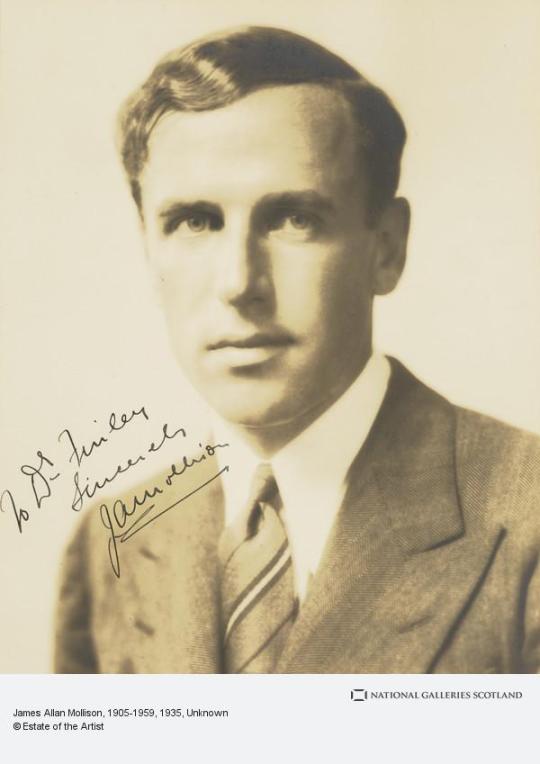
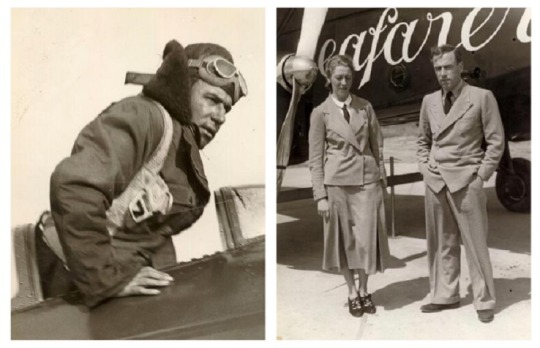

James Allan Mollison was born on April 19th 1905 in Glasgow.
Graeme Obree, Chris Hoy and a certain steam train have all bee called The Flying Scotsman in their time, but the original title goes to a man who actually did fly, Jim Mollison.
Jim would go on to become a pioneering aviator, breaking records for long distance flights. His marriage to fellow aviator Amy Johnson also saw them lauded as the golden couple during their time together.
Born the only child of Hector Alexander Mollison, a consultant engineer, and Thomasina Macnee Addie. He was educated at The Glasgow Academy and Edinburgh Academy and took an early interest in flying and obtaining his Royal Air Force (RAF) Short Service Commission at 18, he was the youngest officer in the service, and upon completion of training was posted to India, flying on active service in Waziristan.
At the age of 22, Mollison became a flying instructor at Central Flying School (CFS), again setting the record for being the youngest in this role. Shortly after, he transferred to the RAF Reserve and devoted his time to civil aviation. In 1928-29, he served as an instructor with the South Australian Aero Club in Adelaide, leaving that position to become a pilot with Eyre Peninsular Airways and Australian National Airways.
In July-August 1931, Mollison set a record time of eight days, 19 hours for a flight from Australia to England, and in March 1932, a record for flying from England to South Africa in 4 days, 17 hours flying a de Havilland Puss Moth.
Mollison eventually served in the ATA Air Transport Auxiliary in the Second World War. In June 1941 Mollison and an ATA crew delivered Cunliffe-Owen OA-1 G-AFMB to Fort Lamy, Chad. The aircraft was fitted out as a personal transport for General De Gaulle.
Mollison was feted in London and New York, and could lead the life he had always wanted. “I am a night bird,” he once said. “Life and enjoyment begin when daylight fades. Cocktail bars and clubs, music, beautiful women— that’s living. Daylight comes to me as an interval for sleeping until an afternoon drink helps to bring on another evening.” His autobiography was called “Playboy of the Air”.
When Mollison and Amy Jonson married in 1932 the press were delighted, they were dubbed The Flying Sweethearts by the press and public. . The match was was perfect for the publicity machine, and the two of them set about devising new aviation records: in 1933 they flew together from Wales to New York and had a ticker-tape reception in Wall Street. But marriage did not last long or end well. It has sometimes been assumed that the match was a simple career move on Mollison's part: certainly he did not halt his relationships with other women. Nor did it limit his drinking. As I said earlier, he got the tag “ the Flying Scotsman” but those close to him called him “Brandy Jim”.
As well as his Playboy lifestyle and heavy drinking Jim Mollison was also quick with his fists, and a manager from the Grosvenor House Hotel was reported as saying ” We've had the most awful night here. Jim Mollison and Amy Johnson had a fearful row and he's beaten her up. The bathroom looks like a slaughterhouse.” The marriage officially ended in 1938.
Mollison kept flying, and – like Johnson – flew in a non-combat role in WWII. Both of them flew in the Air Transport Auxiliary. Johnson died in 1941 after baling out of aircraft. Mollison had at least one close escape, when his plane was shot up, but survived the war.
Mollison later settled in London and ran a public house. He married Maria Clasina E. Kamphuis in 1949 at the Maidenhead Register Office. Mollison continued to abused alcohol and in 1953, the Civil Aviation Authority Medical Board revoked his pilot's licence. The couple separated but Maria bought the Carisbrooke Hotel in Surbiton for him – a temperance hotel.
Suffering from acute alcoholism, he was admitted to The Priory, Roehampton, southwest London, where he died on 30 October 1959, the official cause of death was pneumonia, but unofficially it was thought to be alcoholic epilepsy.
12 notes
·
View notes
Text
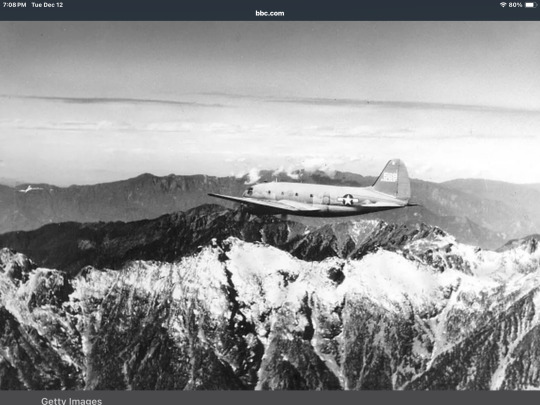
World War Two: When 600 US planes crashed in Himalayas
2 days ago
View of a US Army Air Transport Command cargo plane as it flies over the snow-capped, towering mountains of the Himalayas, along the borders of India, China, and Burma, January 1945, February 20, 1945.Getty Images
Pilots called the flight route "The Hump" - a nod to the treacherous heights of the eastern Himalayas
A newly opened museum in India houses the remains of American planes that crashed in the Himalayas during World War Two. The BBC's Soutik Biswas recounts an audaciously risky aerial operation that took place when the global war arrived in India.
Since 2009, Indian and American teams have scoured the mountains in India's north-eastern state of Arunachal Pradesh, looking for the wreckage and remains of lost crews of hundreds of planes that crashed here over 80 years ago.
Some 600 American transport planes are estimated to have crashed in the remote region, killing at least 1,500 airmen and passengers during a remarkable and often-forgotten 42-month-long World War Two military operation in India. Among the casualties were American and Chinese pilots, radio operators and soldiers.
Has India's contribution to WW2 been ignored?
The operation sustained a vital air transport route from the Indian states of Assam and Bengal to support Chinese forces in Kunming and Chungking (now called Chongqing).
The war between Axis powers (Germany, Italy, Japan) and the Allies (France, Great Britain, the US, the Soviet Union, China) had reached the north-eastern part of British-ruled India. The air corridor became a lifeline following the Japanese advance to India's borders, which effectively closed the land route to China through northern Myanmar (then known as Burma).
The US military operation, initiated in April 1942, successfully transported 650,000 tonnes of war supplies across the route - an achievement that significantly bolstered the Allied victory.
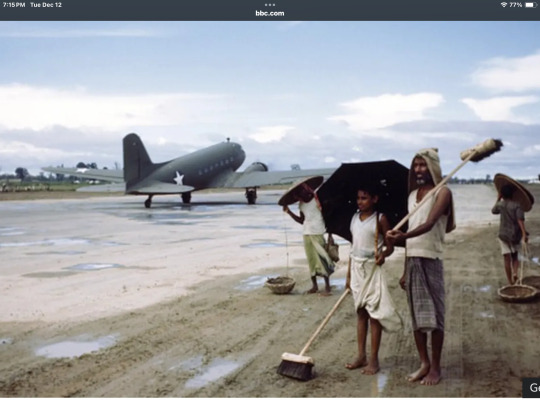
This operation sustained a vital air transport route from India to support Chinese forces in Kunming and Chunking
Pilots dubbed the perilous flight route "The Hump", a nod to the treacherous heights of the eastern Himalayas, primarily in today's Arunachal Pradesh, that they had to navigate.
Over the past 14 years Indo-American teams comprising mountaineers, students, medics, forensic archaeologists and rescue experts have ploughed through dense tropical jungles and scaled altitudes reaching 15,000ft (4,572m) in Arunachal Pradesh, bordering Myanmar and China. They have included members of the US Defense POW/MIA Accounting Agency (DPAA), the US agency that deals with soldiers missing in action.
The forgotten Indian soldiers of Dunkirk
With help from local tribespeople their month-long expeditions have reached crash sites, locating at least 20 planes and the remains of several missing-in-action airmen.
It is a challenging job - a six-day trek, preceded by a two-day road journey, led to the discovery of a single crash site. One mission was stranded in the mountains for three weeks after it was hit by a freak snowstorm.
"From flat alluvial plains to the mountains, it's a challenging terrain. Weather can be an issue and we have usually only the late fall and early winter to work in," says William Belcher, a forensic anthropologist involved in the expeditions.
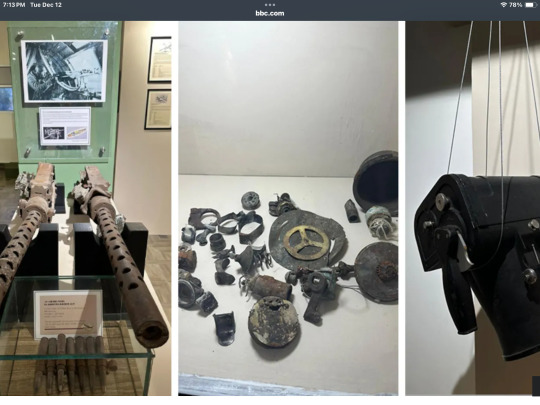
A machine gun, pieces of debris, a camera: some of the recovered artefacts at the newly opened museum
Discoveries abound: oxygen tanks, machine guns, fuselage sections. Skulls, bones, shoes and watches have been found in the debris and DNA samples taken to identify the dead. A missing airman's initialled bracelet, a poignant relic, exchanged hands from a villager who recovered it in the wreckage. Some crash sites have been scavenged by local villagers over the years and the aluminium remains sold as scrap.
These and other artefacts and narratives related to these doomed planes now have a home in the newly opened The Hump Museum in Pasighat, a scenic town in Arunachal Pradesh nestled in the foothills of the Himalayas.
US Ambassador to India, Eric Garcetti, inaugurated the collection on 29 November, saying, "This is not just a gift to Arunachal Pradesh or the impacted families, but a gift to India and the world." Oken Tayeng, director of the museum, added: "This is also a recognition of all locals of Arunachal Pradesh who were and are still an integral part of this mission of respecting the memory of others".
The museum starkly highlights the dangers of flying this route. In his vivid memoirs of the operation, Maj Gen William H Tunner, a US Air Force pilot, remembers navigating his C-46 cargo plane over villages on steep slopes, broad valleys, deep gorges, narrow streams and dark brown rivers.
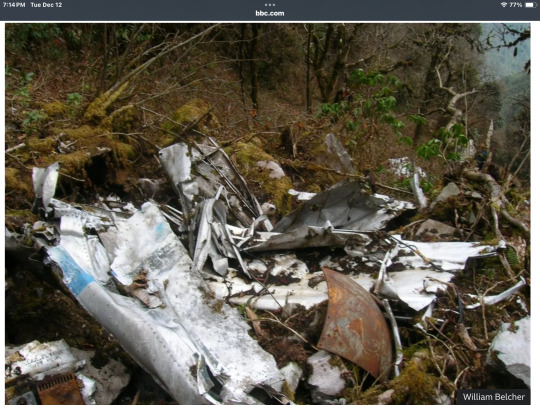
Wreckage of many planes has been found in the mountains in recent years
The flights, often navigated by young and freshly trained pilots, were turbulent. The weather on The Hump, according to Tunner, changed "from minute to minute, from mile to mile": one end was set in the low, steamy jungles of India; the other in the mile-high plateau of western China.
Heavily loaded transport planes, caught in a downdraft, might quickly descend 5,000ft, then swiftly rise at a similar speed. Tunner writes about a plane flipping onto its back after encountering a downdraft at 25,000ft.
Spring thunderstorms, with howling winds, sleet, and hail, posed the greatest challenge for controlling planes with rudimentary navigation tools. Theodore White, a journalist with Life magazine who flew the route five times for a story, wrote that the pilot of one plane carrying Chinese soldiers with no parachutes decided to crash-land after his plane got iced up.
The co-pilot and the radio operator managed to bail out and land on a "great tropical tree and wandered for 15 days before friendly natives found them". Local communities in remote villages often rescued and nursed wounded survivors of the crashes back to health. (It was later learnt that the plane had landed safely and no lives had been lost.)
Does Nolan's Dunkirk ignore the role of the Indian army?
Not surprisingly, the radio was filled with mayday calls. Planes were blown so far off course they crashed into mountains pilots did not even know were within 50 miles, Tunner remembered. One storm alone crashed nine planes, killing 27 crew and passengers. "In these clouds, over the entire route, turbulence would build up of a severity greater than I have seen anywhere in the world, before or since," he wrote.
Parents of missing airmen held out the hope that their children were still alive. "Where is my son? I'd love the world to know/Has his mission filled and left the earth below?/Is he up there in that fair land, drinking at the fountains, or is he still a wanderer in India's jungles and mountains?" wondered Pearl Dunaway, the mother of a missing airman, Joseph Dunaway, in a poem in 1945.
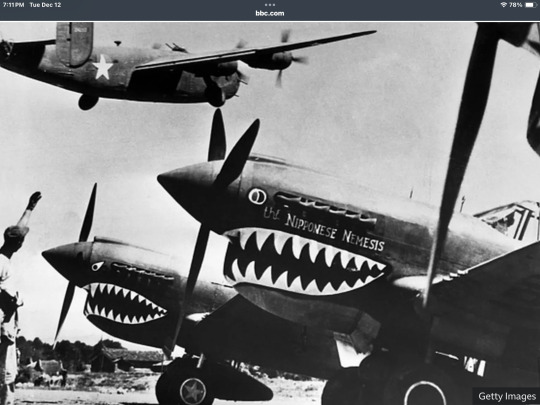
The China-bound US transport planes took off from airbases in India's Assam
The missing airmen are now the stuff of legend. "These Hump men fight the Japanese, the jungle, the mountains and the monsoons all day and all night, every day and every night the year round. The only world they know is planes. They never stop hearing them, flying them, patching them, cursing them. Yet they never get tired of watching the planes go out to China," recounted White.
The operation was indeed a daredevil feat of aerial logistics following the global war that reached India's doorstep. "The hills and people of Arunachal Pradesh were drawn into the drama, heroism and tragedies of the World War Two by the Hump operation," says Mr Tayeng. It's a story few know.
13 notes
·
View notes
Text
A Blog Post from, Rozzie Schatz, Library Intern from New York University.
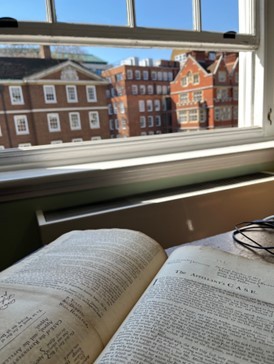
Since I began at Middle Temple Library in February, I have been slowly cataloguing the Library’s House of Lords Cases. While this cataloguing will continue long after my work study ends, I consider myself lucky to see some of the specific cases I enter into the spreadsheet. As an American, I know little about English law, and next to nothing about 18th-century English law, so it is always nice to glean bits and pieces of information from a well-endowed resource like the Middle Temple.
In my cataloguing, I have come across many cases involving the Dutch East-India Company abbr. VOC. This Dutch company held a 20-plus-year monopoly on European trade with Asia. They were a major force in the world economy of the 17th and 18th centuries, however, their aggressive expansion efforts led to conflicts with many European countries including England. Ultimately they went bankrupt, but not before finding themselves in hundreds of court cases in the House of Lords and other European legal systems.

This specific case:
Captain Alexander Hamilton (Appellants)
v.
The Lords Directors of the Dutch East India Company, and Will. Drummond, their Factor, (Respondents)
Argues over a ruling in the seizure of a boat and its goods by the VOC in the Malaysian state of Malacca. A ship dubbed ‘Satisfaction’ arrived in Riau, Indonesia (spelled Rhio in the case report) on a regularly scheduled trading route. During the period Satisfaction was docked, the captain, Alexander Hamilton (no relation to the famed American politician and protagonist in the rap musical ‘Hamilton’) sent a smaller vessel to carry out additional, impromptu trade with Atcheen, in the Indonesian province of Ache.
The smaller vessel was set to go to Atcheen, when the King of Johor (spelled Johore in the case report), the region where the Satisfaction docked, requested that some copper be put aboard the smaller vessel and dropped off in Malacca on the way to Atcheen. The crew agreed and the vessel was loaded. As the vessel docked in Malacca and had the copper unloaded, the vessel’s captain and owner Mr. MacDowall purchased opium from another ship that was passing through the Port. The vessel then prepared to leave Malacca and continue to Atcheen when it was unexpectedly raided by the police of the VOC. The VOC arrested the people on board the vessel and seized its content including; 18 chests of opium, 1535 pounds of sandalwood, 167 pounds of shellac, and 26 pounds of agalla-wood. When Captain Hamilton appeared in court, he claimed it was an unlawful seizure, but the Malacca judge, backed by the VOC, cited a new city order regarding illegal contraband.
It is worth noting that even under this order, opium was a grey area and if it was determined to be contraband the law would allow for the seizure of just the opium and not the entirety of the contents of the ship.
Upon the decision in the Malacca court, which upheld that the seizure of the ship was rightful, Captain Hamilton filed a petition with the Court of Admiralty in Scotland. The Scottish court maintained that ultimately the initial ruling was not possible due to res judicata, a decision handed out by a judge which places finality upon the decision and does not allow for re-litigation regarding the case.
The House of Lords affirmed the Court of Admiralty’s decision that a court from one nation cannot label a case res judicata that has legal standing from beyond the country’s borders.
This case was a fun one to read, not only did it involve opium on the high seas, but I also learned a new term for a legal principle. This is just one of the many cases I have catalogued at Middle Temple and I have no doubt there is more legal jargon and high-stakes cases to be seen.
Rozzie Schatz
Library intern from New York University
9 notes
·
View notes
Text
Chennai, often dubbed the "Gateway to South India," is a city where history and modernity coexist in perfect harmony. It is a city that provides citizens with a good quality of life because of its rich cultural heritage, elegant temples, and perfect beaches. If you and your family are thinking of relocating to Chennai, there are a number of important things to take into account when renting accommodations through the Nestaway platform. Apartment rentals in Chennai are impacted by their location, connectivity, and security. Using the Nestaway good platform, you can choose a family-friendly property in Chennai in an area that exactly aligns with your needs. These areas give close access to prestigious schools in addition to accommodating your job convenience. You can securely explore these localities for your Chennai house rental with Nestaway, ensuring a smooth transition.
#nestaway#nestaway ratings#nestawayreview#nestawaygood#nestaway platform#nestaway reviews#nestaway reliable#nestaway good#nestawaypune#nestaway review
4 notes
·
View notes
Text
Why should we be eager to book a space at The Element Apartment?

By taking simple steps of making inquiries and getting answers to your doubts, you can increase your trust, which will lead to purchase transparency. The largest property hub is Delhi/NCR, where there are numerous builders and developers as well as a range of locales. Delhi NCR, a well-known region in North India, is home to the greatest number of highly regarded developers and builders of 1-bedroom apartments. The Element 3 BHK Apartment is a well-liked version, dubbed the city of business, but over time, a refined social scene has emerged. If you're looking for luxury, this fantastic location is ideal for 3-bedroom dream houses. Or, Siddhartha Vihar, Ghaziabad will be the ideal place to invest if someone is looking for a luxury residential location. Delhi NCR is the destination for people looking for a place to call home or a place.

There might be countless opportunities to invest in residential and commercial real estate in Ghaziabad but, the things available at The Element in Pratap Vihar, Ghaziabad would be a top-ranked property hub. Ghaziabad is the best high-tech place where we can find tranquility and normalcy. In The Element, there are 3 BHK Apartment Siddharth Vihar and luxury flats, as well as top-notch recreational space with an abundance of amenities for stores and offices. The remaining locations are dedicated to providing a modern lifestyle with elegance and enthusiasm. Let's make the most of the property's reasonable cost, ideal location, ideal lifestyle, best connection, legal authenticity, all fundamental and social infrastructures anchored by the best building quality, and residential property that is registered with the RERA.
0 notes
Text
Why Exclusive Cigars in Mumbai Are Worth the Investment

Introduction
Mumbai, often dubbed the financial capital of India, is also a cultural melting pot where luxury meets tradition. Among the city’s many offerings, the allure of exclusive cigars holds a unique place. But why are these cigars so revered, and why should you consider investing in them? This blog dives into the nuances of the cigar culture in Mumbai, shedding light on the premium quality, local availability, and cultural significance of exclusive cigars.
Whether you’re an aficionado or a novice, understanding what makes exclusive cigars Mumbai so desirable will enrich your appreciation for this timeless indulgence. Let’s explore the journey of these hand-rolled masterpieces and why they’re worth every penny.
The Appeal of Exclusive Cigars
The Art of Craftsmanship
Handmade Excellence
Exclusive cigars are celebrated for their intricate craftsmanship. From the selection of tobacco leaves to the meticulous rolling process, every step is a testament to artistry. Premium cigars in Mumbai are no exception, often sourced from world-renowned tobacco-growing regions and crafted by seasoned experts.
Blend and Flavor
The blend of tobacco significantly influences a cigar’s flavor profile. In Mumbai, cigar lounges and boutiques often offer exclusive cigars with unique blends that cater to diverse palates. These blends range from the earthy richness of Nicaraguan tobacco to the creamy notes of Dominican leaves.
Status Symbol
Cigars have long been associated with luxury and sophistication. Owning and smoking exclusive cigars Mumbai is not just about indulgence; it’s a statement of class and refinement. The city’s elite often embrace cigars as a mark of their success and taste.
Why Mumbai Is a Hotspot for Exclusive Cigars
A Thriving Luxury Market
High-End Retailers
Mumbai boasts a plethora of luxury cigar retailers. These establishments curate an extensive collection of exclusive cigars, ensuring connoisseurs have access to global brands like Cohiba, Montecristo, and Arturo Fuente. Some stores even offer private tasting rooms for an immersive experience.
Personalized Services
Many cigar retailers in Mumbai provide personalized consultations, helping customers choose cigars that align with their preferences. This tailored approach enhances the buying experience, making it more than just a transaction.
Cultural Significance
Cigar Lounges
The city’s cigar lounges are not just spaces to enjoy a fine smoke but also hubs for networking and socializing. These lounges often host events where aficionados gather to share their passion, exchange insights, and build connections.
A Growing Community
Mumbai’s cigar culture is rapidly evolving, with a growing community of enthusiasts. From seasoned smokers to curious newcomers, the city offers a welcoming environment for anyone interested in exploring the world of exclusive cigars.
Key Considerations When Buying Exclusive Cigars in Mumbai
Quality Assurance
Authenticity
One of the biggest concerns for cigar buyers is authenticity. Reputable retailers in Mumbai ensure that their cigars are genuine, sourcing them directly from authorized distributors.
Storage Conditions
Proper storage is crucial for maintaining a cigar’s quality. Leading retailers in Mumbai often invest in state-of-the-art humidors, ensuring their cigars remain in optimal condition.
Price vs. Value
Investment Perspective
Exclusive cigars can be expensive, but their value often justifies the price. From the quality of tobacco to the intricacies of production, these cigars offer an unmatched experience.
Longevity
A well-stored cigar can retain its quality for years, making it a worthwhile investment. Mumbai’s top retailers often guide customers on proper storage techniques, ensuring longevity.
FAQs About Exclusive Cigars in Mumbai
Frequently Asked Questions from “People Also Ask”
What are the best places to buy exclusive cigars in Mumbai?
Mumbai houses several luxury cigar retailers, including standalone boutiques and high-end stores in five-star hotels. Notable names include The Taj Mahal Palace’s cigar lounge and standalone outlets in South Mumbai.
Are Cuban cigars available in Mumbai?
Yes, Cuban cigars are available at select retailers in Mumbai. These establishments ensure authenticity and provide a range of options from top Cuban brands.
How much do exclusive cigars cost in Mumbai?
Prices vary widely depending on the brand and blend. While some cigars are available for as low as ₹1,000, premium options can go up to ₹50,000 or more.
Do cigar lounges in Mumbai require a membership?
Many premium cigar lounges in Mumbai operate on a membership basis, offering exclusive perks to members. However, some lounges also allow walk-ins, depending on availability.
Original FAQs
How do I choose the right cigar as a beginner in Mumbai?
If you’re new to cigars, start with milder options. Consult with experts at local retailers or lounges who can guide you based on your preferences.
Are there any cigar events or clubs in Mumbai?
Yes, Mumbai hosts several cigar events and has clubs where enthusiasts gather to share their passion. These gatherings are excellent opportunities to learn and network.
Can I store cigars at home in Mumbai’s climate?
Mumbai’s humid climate can affect cigar quality. Investing in a good humidor is essential for maintaining the right storage conditions at home.
Conclusion
Exclusive cigars in Mumbai are more than just luxury items; they’re a blend of artistry, culture, and personal indulgence. From the city’s thriving luxury market to its growing community of aficionados, there are countless reasons to invest in these masterpieces.
Whether you’re seeking a taste of sophistication or a way to connect with like-minded individuals, Mumbai offers an unparalleled cigar experience. So, the next time you find yourself in the city, take a moment to explore its exclusive cigar offerings—it’s an investment you won’t regret.
#best cigar online#top cigar online#premium cigar in mumbai#best quality cigar near me#cigar accessories#buy cigar online
0 notes
Text
"when I take a contract I look at the money, and not at the person who pays" - Vicky

this movie follows Vicky (Bobby Deol), a young man who escapes India and reaches Australia with a secret mission of vengeance. he falls in love with Preeti (Preity Zinta), the daughter of a wealthy and powerful man.
read my review below (may contain spoilers):

rewatched January 15, 2022 on netflix

Soldier is a film that screams 90s Bollywood - over-the-top action sequences, explosions, and dramatic twists. I enjoy how loud and absurd it is, but at the same time, it feels a bit cringey. the exaggerated scenes, especially those that defy the laws of physics, are a trademark of Bollywood from that era. it’s messy, chaotic, and somehow charming in its own way. surprisingly, for a movie titled Soldier, the focus is more on romance than action. the love story between Vicky and Preeti is central, with a mix of drama and emotions that Bollywood is known for. Preity Zinta, one of my favourite actresses, made her debut in this novie. she shines brightly, though I have to say, dubbing her voice didn’t sit well with me. Preity is known for her deep husky voice, and hearing a high-pitched dub felt strange and out of place. it’s interesting how Bollywood often prefers a certain kind of “feminine” voice for women in its movies, I am so glad she got to use her natural voice in her later movies. still, her charm and energy are undeniable here. she even won the award for Best Female Debut for this movie, and I think she deserved it.

the action scenes in Soldier are bold and explosive, but they also feel exaggerated to the point of being unrealistic. it’s hard not to side-eye at some moments because they are so extra. yet, this over-the-top style has its own appeal. it’s a loud and dramatic movie that doesn’t shy away from being larger-than-life. despite its popularity, Soldier doesn’t fully resonate with me. while it’s a box office hit, I feel the movie tries too hard to juggle action, romance, and drama. the transitions between these elements are messy, and the story didn’t grip me emotionally. it’s entertaining in parts, but as a whole, it leaves me wanting more depth and coherence. in the end, Soldier is a product of its time. it’s a mix of cheesy, dramatic, and loud Bollywood fun, but it lacks the emotional connection I look for in a movie. it’s not a bad movie, but it just doesn’t leave a lasting impact on me.
p/s my friend told me Bobby Deol is Hugh Laurie, and this is Dr Gregory House's time travelling arc 💀💀

final verdict: I have mixed feelings about it

maturity rating: 13+ genre: action, rom com duration: 2h 36m (156 mins) country: India language: Hindi screenplay: Shyam Goel, Sachin Bhowmick major cast: Bobby Deol, Preity Zinta, Suresh Oberoi, Farida Jalal, Dalip Tahil, Sharat Saxena, Johny Lever

#soldier#bobby deol#preity zinta#suresh oberoi#farida jalal#dalip tahil#sharat saxena#johny lever#action#rom com#2½ stars#i have mixed feelings about it#india#bollywood#1998#1990's#13+#abbas burmawalla#mastan burmawalla#soldier 1988#movieblr#filmblr#polls on tumblr#polls#movie polls#movie review#Film Review
0 notes
Text
#voice over Company in India#Dubbing house in india#Top dubbing studios in india#Dubbing services in india#professional dubbing service in india#voice over studios in india#voice over services in india#Voice Dubbing Studio in india#Voice Dubbing Services in India
0 notes
Text
Discovering the Best Property Developers and Good Builders in Pune
Pune, often dubbed the "Oxford of the East," is a city that combines tradition with modernity, offering a perfect blend of career opportunities, education, and a great quality of life. This unique appeal has fueled a growing demand for residential and commercial real estate. As a result, the city is witnessing property developers in Pune, who are molding its skyline to provide innovative and quality spaces for homebuyers as well as investors. Partnering with good builders in Pune becomes important while finding a place to call home or an investment that promises value.
Why Pune is Booming with Real Estate Development
The fast urbanization in Pune has led to the creation of demand for all types of housing-from affordable apartments to luxury villas. Growth of the IT sector, educational institutions, and the very active expat community makes it one of the most in-demand cities for real estate development in India. If you are looking to buy your first home, invest in commercial property, or find a space to live and work in, then Pune's property market is one of the best for all needs.
However, with the growth of more and more property developers in Pune, it can become very hard to decide upon the best one. Therefore, comes in the role of a good builder in Pune, that becomes indispensable.
What constitutes a Good Builder in Pune?
In the competitive real estate market of Pune, good builders in Pune stand out due to their commitment to quality, transparency, and customer satisfaction. Whether you are investing in residential or commercial spaces, you want a builder who not only delivers on promises but also ensures the long-term durability of your property. A good builder will focus on:
Quality Construction: Great builders ensure the use of quality materials, skilled labor, and paying attention to detail. So, your property will be able to stand the test of time.
Timely Delivery: One of the most frustrating things in real estate is delayed projects. The best builders actually give a priority to the adherence of the timeline and manage expectations.
Clear Communication: A builder being trustworthy would depend upon transparency in the dealings and proper communication related to pricing, amenities, and progress.
After-Sales Service: A good builder will stand by the work even after the project has been completed, looking at all concerns and holding standards for quality.
Top Property Developers in Pune
Kolte-Patil Developers Having many years of experience in the real estate sector, Kolte-Patil Developers is one name that always rings in with quality and innovation. They are recognized residential and commercial developers from Pune. Their projects ensure offering not just homes but lively communities that boast ample green areas, class, and sustainability.
Pride Group Pride Group is known for luxurious, reliable, and on-time delivery. It has successfully completed several residential and commercial developments, hence it is ahead of all good builders in Pune. High-end projects and thoughtful planning make all the property they construct symbolic of excellence.
Mantra Properties Mantra Properties is one of the up-and-coming stars in the Pune real estate sector. They are keen on delivering quality homes for all budgets. Be it affordable housing or a premium space, Mantra Properties has something for everyone. Their customer-first approach and attention to detail make them one of the best property developers in Pune.
VTP Group VTP Group is known for its innovative designs and high-quality construction. This has helped the company secure a position among the best property developers in Pune. Their projects are modern in amenities, smart in layout, and strategically located, giving residents the best of urban living. Their reputation as good builders in Pune is built on trust, consistency, and a focus on quality.
How to Choose the Right Property Developer in Pune
When selecting a property developer in Pune, it’s important to do your research. Look for developers with a proven track record of delivering high-quality projects on time. Consider visiting completed projects, speaking with past buyers, and reviewing customer feedback. A good builder in Pune will offer transparency in terms of legal clearances, project updates, and overall communication. They also like guiding the client through every single process in the process, beginning with initial design to final possession.
Conclusion
Pune property market is full of promise, and it has some of the best options only if you get together with the right property builders in Pune. Whether you are an investor, first-time homebuyer, or in search of new office space, working with good builders in Pune will ensure that you are buying a property, but above all, investing in something valuable for your future. With the right builder beside you, quality construction, timely delivery, and a hassle-free experience await in bringing your dream home or office to life.
1 note
·
View note
Text
INDIA Alliance in Maharashtra to Approach SC Over ‘Election Scam’

Prashant Sudamrao Jagtap, Pune President of NCP(SP), announced that the INDIA alliance will challenge the alleged Maharashtra assembly election scam in the Supreme Court, expressing confidence in a favorable ruling.
Arvind Kejriwal's Visit to Auto Driver's House – Announces 5 Guarantees Ahead of Delhi Polls Delhi CM Arvind Kejriwal visited an auto driver's home for lunch and later unveiled five new guarantees ahead of the Delhi elections. These include insurance cover of up to ₹10 lakh for auto drivers, financial support for daughters' weddings, biannual uniform allowances, coaching support for drivers' children, and a relaunch of the Pucho App.
BJP Releases Inside Visuals of Kejriwal’s Bungalow – Accuses Him of Corruption The BJP released visuals of former Delhi CM Arvind Kejriwal’s luxurious bungalow, calling it a "museum of corruption." The party criticized him for contradicting his "common man" image, dubbing the house a "glass palace."
INDIA Bloc Files No-Confidence Motion Against Rajya Sabha Chairperson Jagdeep Dhankhar In a historic move, the Congress-led INDIA opposition bloc filed a no-confidence motion against Rajya Sabha Chairperson Jagdeep Dhankhar, securing over 50 signatures from multiple political parties.
Karnataka Government Declares Holiday Following the Death of SM Krishna The Karnataka government, led by CM Siddaramaiah, declared a holiday for schools, colleges, and government offices on Wednesday, following the death of former Chief Minister SM Krishna. The state will observe three days of mourning in his honor as tributes pour in for the influential politician.
Disclaimer: This live blog is AI-generated and has not been edited by LiveMint staff.
1 note
·
View note
Text
Top 10 Must-Visit Places on Your Europe Tour 2025
Embark on an unforgettable adventure in 2025 with exciting Europe Tour Packages designed to showcase the best of the continent. Whether you're a history enthusiast, a foodie, or someone seeking picturesque landscapes, Europe has something for everyone. For travelers from India, Europe Packages From Mumbai offer convenient and well-planned options to explore this enchanting destination. Let’s dive into the must-visit places and events to include in your Europe Trip Package From Mumbai.
Must-Visit Destinations for Europe Tour 2025
1. Paris, France
No Europe tour is complete without a visit to the City of Light. Marvel at the iconic Eiffel Tower, stroll along the Champs-Élysées, and admire art masterpieces at the Louvre Museum. In 2025, Paris will also host cultural festivals and art exhibitions that add a unique charm to your experience.
2. Rome, Italy
Step back in time as you explore the ancient ruins of the Colosseum, Roman Forum, and the Pantheon. A visit to Vatican City to see St. Peter’s Basilica and the Sistine Chapel is a must for art and history lovers.
3. Amsterdam, Netherlands
Known for its scenic canals, vibrant tulip fields, and the Anne Frank House, Amsterdam offers a mix of natural beauty and cultural heritage. Don’t miss the Amsterdam Light Festival, which illuminates the city’s waterways in magical ways.
4. Zurich and Lucerne, Switzerland
Switzerland’s stunning alpine landscapes are a treat for nature lovers. Explore the charming streets of Zurich and take a day trip to Lucerne for its medieval architecture and breathtaking views of Mount Pilatus.
5. Prague, Czech Republic
Dubbed the "City of a Hundred Spires," Prague enchants visitors with its fairy-tale castle, Gothic churches, and vibrant Old Town Square. The Prague Spring Music Festival in 2025 promises world-class performances.
6. Santorini, Greece
For a romantic getaway, Santorini’s white-washed buildings, blue-domed churches, and stunning sunsets are unparalleled. Enjoy Mediterranean cuisine and relax on its beautiful beaches. Explore Greece.
Exciting Events to Experience in Europe in 2025
Oktoberfest in Munich, Germany
Join the world’s largest beer festival in Munich, a celebration of Bavarian culture, food, and music. Oktoberfest 2025 is expected to draw millions of visitors for its lively atmosphere.
Cannes Film Festival in France
Experience the glamour of the Cannes Film Festival, a prestigious event showcasing the best in international cinema. Walk the red carpet and witness celebrity appearances.
La Tomatina in Buñol, Spain
Get ready for the ultimate food fight during La Tomatina, a thrilling festival where participants throw ripe tomatoes in a spirit of fun and camaraderie. Explore Spain .
Edinburgh Festival Fringe in Scotland
Immerse yourself in the world’s largest arts festival, featuring theater, comedy, music, and more. The 2025 edition promises a diverse lineup of performances from around the globe.
Why Choose Europe Tour Packages From Mumbai?
Traveling to Europe from Mumbai becomes stress-free with well-curated Europe Tour Packages From Mumbai. These packages include:
Seamless flights from Mumbai to major European destinations.
Comfortable accommodations in prime locations.
Guided tours to iconic landmarks.
Flexible itineraries tailored to your preferences.
Book Your Europe Trip Package From Mumbai Today
2025 is the perfect year to explore Europe’s diverse cultures, rich history, and scenic beauty. With Europe Tour Packages From Mumbai by Travelmaddy, you can enjoy a hassle-free vacation filled with unforgettable memories. Whether you’re traveling solo, with family, or friends, there’s a package to suit every need.
Start planning your dream Europe Tour 2025 now and get ready for an extraordinary journey. Contact now for more details.
[europe tour 2025, europe tour packages, Europe Packages From Mumbai, Europe Tour Packages From Mumbai, Europe Trip Package From Mumbai, europe tour packages 2025, escape to europe tour 2025]
0 notes
Text
Dynamic Horizons: Next-Gen MBA & PGDM Institutions in Mumbai

Mumbai, often referred to as the financial capital of India, is a thriving hub for management education, offering a wide array of MBA and PGDM programs. With its dynamic corporate environment, global connectivity, and multicultural ethos, Mumbai provides an ideal ecosystem for aspiring managers and entrepreneurs to thrive. Let's explore some of the top next-gen MBA and PGDM institutions in Mumbai that are redefining management education.
Key Features of Mumbai's Leading MBA & PGDM Institutions
Industry IntegrationMumbai’s premier business schools maintain close ties with industry giants, ensuring a curriculum that is relevant and future-focused. Programs often include real-world case studies, internships, and corporate mentoring to bridge the gap between academia and industry.
Global PerspectivesMany institutions offer international exchange programs and collaborations with global universities, equipping students with a broader perspective and cross-cultural understanding.
Focus on Innovation and TechnologyIncorporating the latest advancements, such as artificial intelligence, data analytics, and digital marketing, next-gen programs emphasize preparing students for the ever-evolving business landscape.
Top Next-Gen MBA & PGDM Institutions in Mumbai
SP Jain Institute of Management and Research (SPJIMR)Known for its innovative teaching methodologies and leadership programs, SPJIMR offers a range of MBA and PGDM courses tailored to meet the demands of the corporate world. The institution emphasizes social sensitivity and experiential learning.
Jamnalal Bajaj Institute of Management Studies (JBIMS)Often dubbed the 'CEO Factory,' JBIMS has a legacy of producing top corporate leaders. Its programs are highly customizable, allowing students to focus on areas like finance, marketing, or entrepreneurship.
Narsee Monjee Institute of Management Studies (NMIMS)NMIMS is at the forefront of management education, with a focus on technological integration, global exposure, and industry-driven projects. Its cutting-edge campus in Mumbai offers state-of-the-art facilities and a conducive learning environment.
Welingkar Institute of Management (WeSchool)WeSchool is renowned for its design-thinking approach to management education. Its PGDM programs focus on integrating traditional business knowledge with modern innovation, preparing students for disruptive markets.
Tata Institute of Social Sciences (TISS)While primarily known for social sciences, TISS also excels in management studies with a strong focus on social impact and sustainable business practices.
What Sets These Institutions Apart?
Holistic Learning: From business ethics to leadership development, these institutions ensure all-rounded growth.
Placement Opportunities: With Mumbai being a corporate hub, students have access to internships and placements with leading companies.
Networking Potential: A vibrant student community and proximity to industry leaders foster invaluable professional connections.
Why Choose Mumbai for MBA or PGDM?
Mumbai's unique advantage lies in its proximity to India's top corporate houses, startups, and MNCs. Students not only gain exposure to world-class education but also benefit from unparalleled networking and job opportunities in fields ranging from finance and marketing to IT and operations.
Final Thoughts
Next-gen MBA and PGDM institutions in Mumbai are shaping the future of business education by merging innovation with practical learning. Whether you're an aspiring entrepreneur or a future corporate leader, these institutions offer the perfect launchpad for your career aspirations.
0 notes
Text

Chennai, often dubbed the "Gateway to South India," is a city where history and modernity coexist in perfect harmony. It is a city that provides citizens with a good quality of life because of its rich cultural heritage, elegant temples, and perfect beaches. If you and your family are thinking of relocating to Chennai, there are a number of important things to take into account when renting accommodations through the Nestaway platform. Apartment rentals in Chennai are impacted by their location, connectivity, and security. Using the Nestaway good platform, you can choose a family-friendly property in Chennai in an area that exactly aligns with your needs. These areas give close access to prestigious schools in addition to accommodating your job convenience. You can securely explore these localities for your Chennai house rental with Nestaway, ensuring a smooth transition.
#nestaway#nestaway ratings#nestawayreview#nestawaygood#nestaway platform#nestaway reliable#nestaway reviews#nestaway good#nestawaypune#nestaway review
4 notes
·
View notes